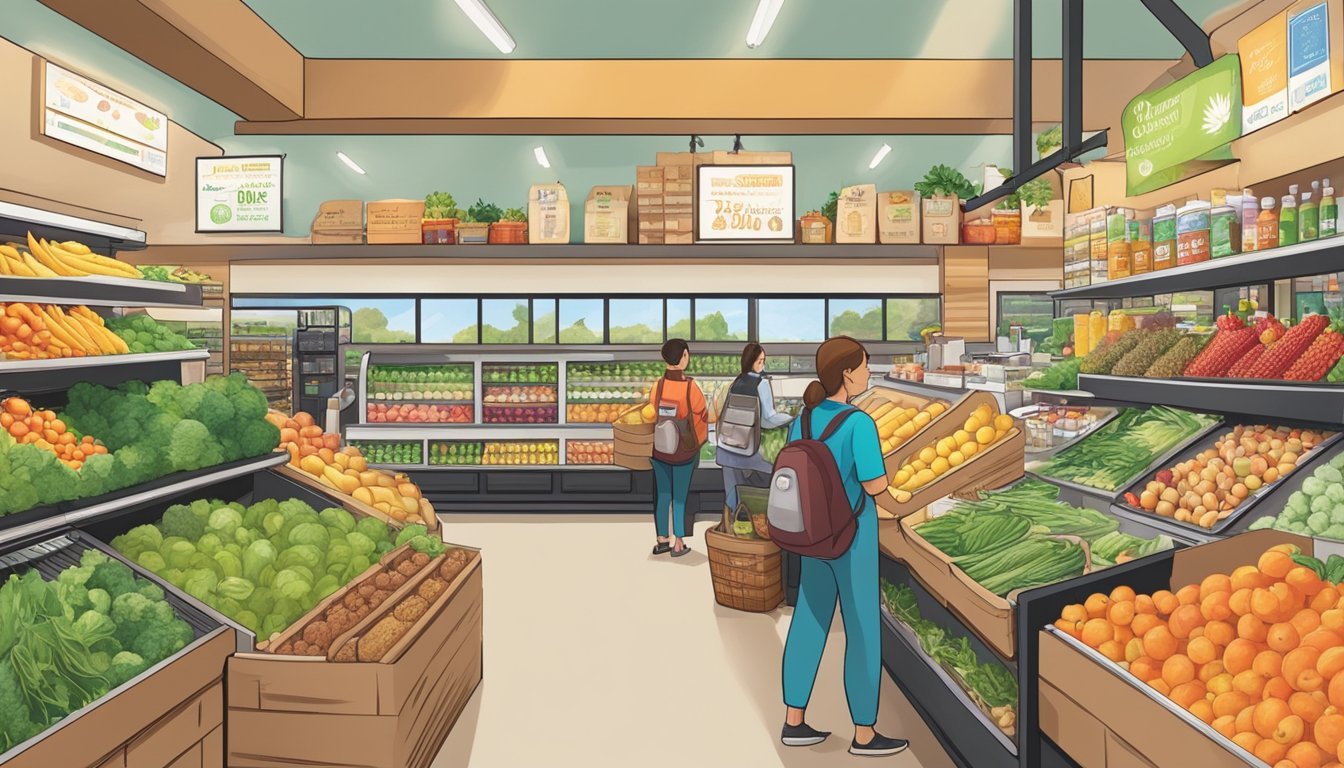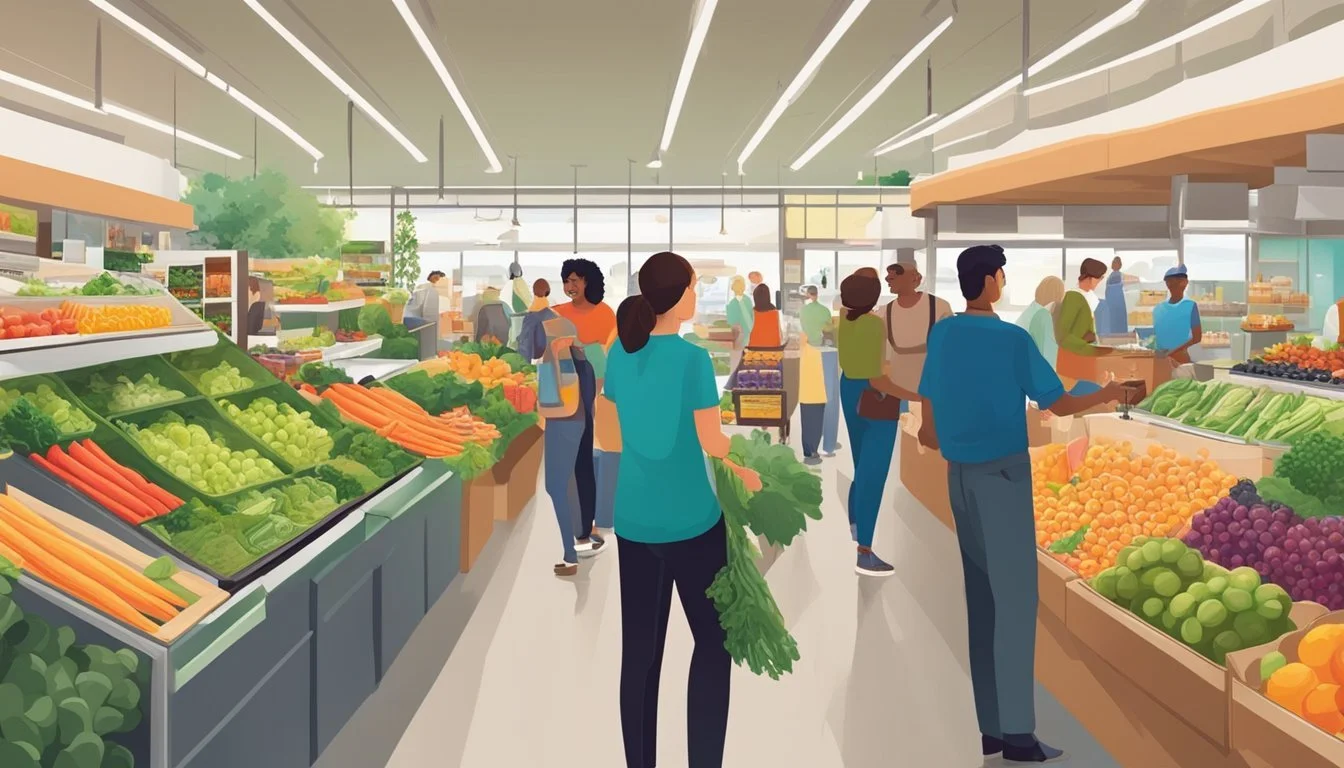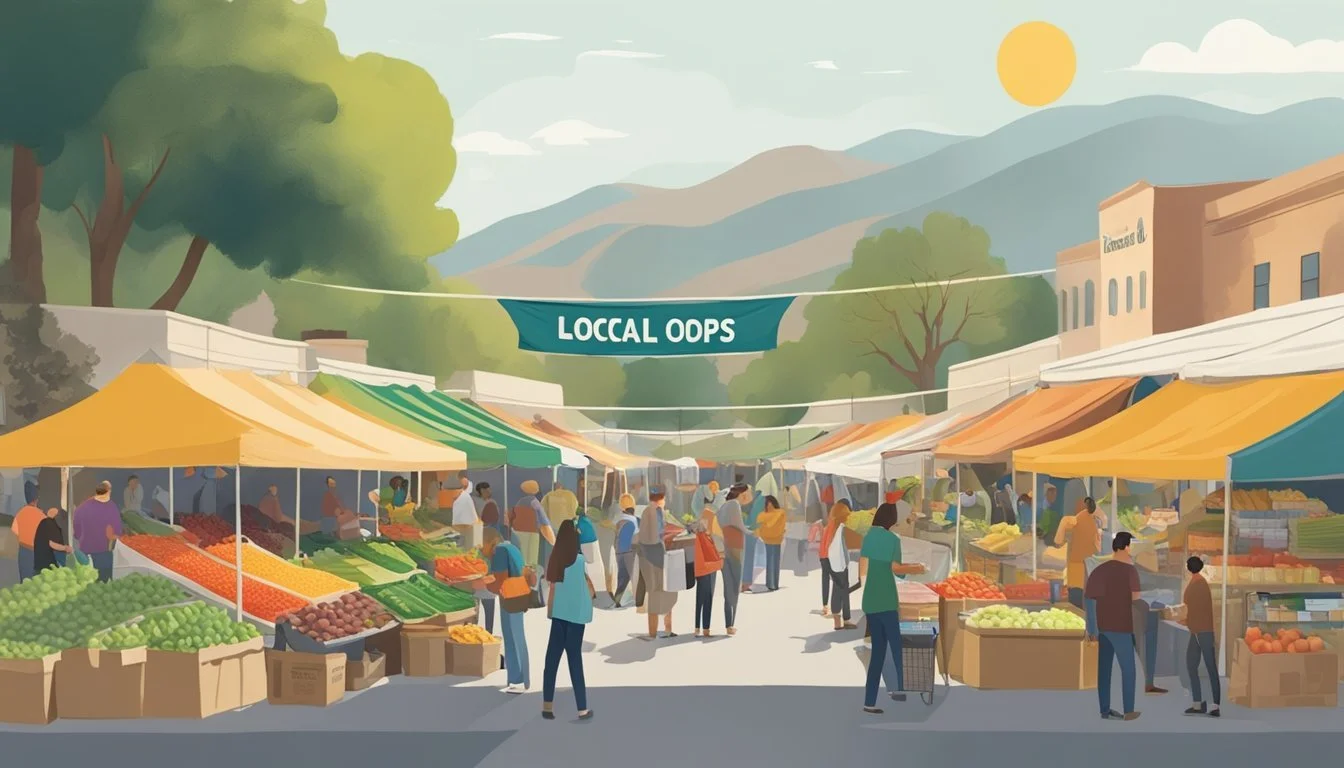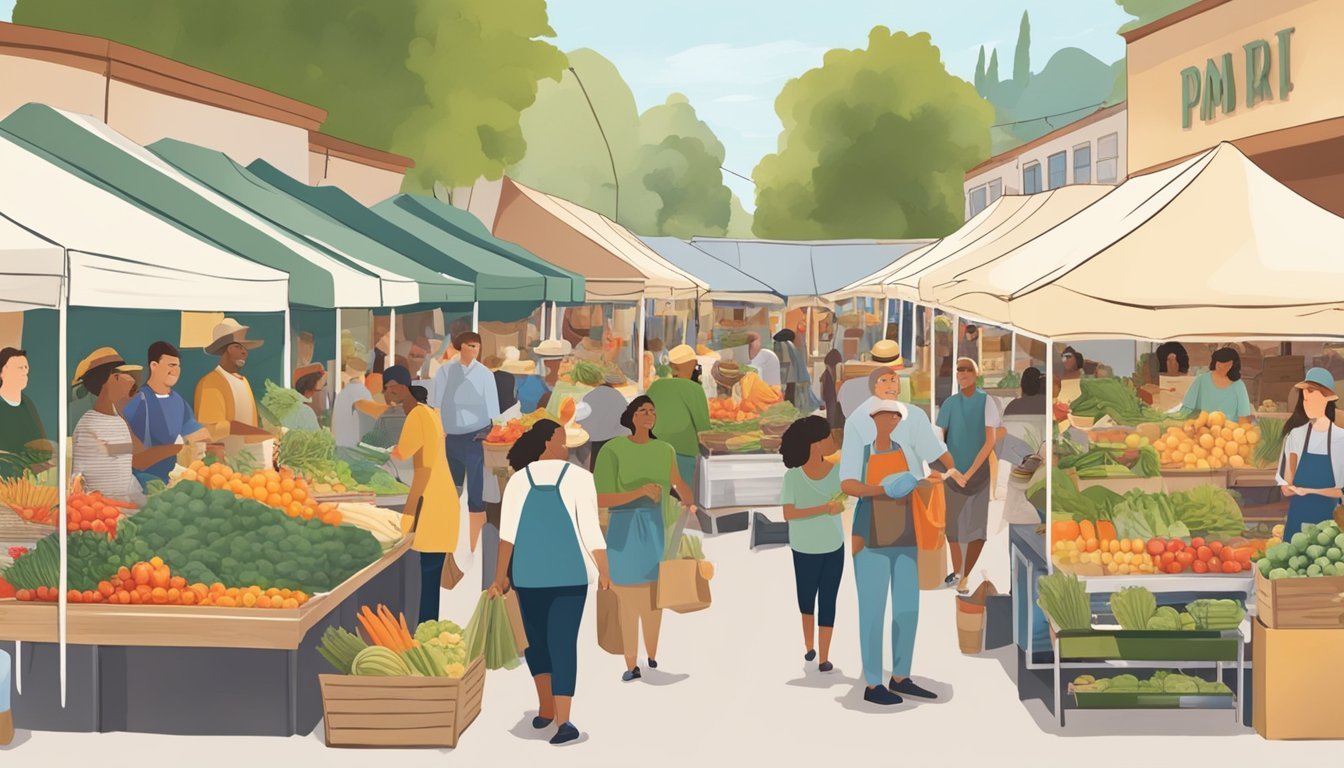Guide to Food Co-Ops in Santa Clarita, CA
Your Essential Shopping Resource
Santa Clarita, CA, is home to a variety of food co-ops, each offering a unique contribution to the community's shopping options. These member-owned cooperatives are a testament to the city's commitment to sustainable living and community-focused food sourcing. Through mutual cooperation, they provide residents access to fresh, locally sourced, and often organic produce as well as other natural food options.
The co-ops in the area range from small, volunteer-run outfits to larger, more established markets. Shoppers can find a selection of goods similar to what's available in traditional supermarkets but with a focus on local and ethical sourcing. Many co-ops also serve as community hubs, providing education on healthy eating, sustainable practices, and supporting local farmers and producers.
Among the notable establishments in Santa Clarita are Underwood Family Farms and The Whole Wheatery, which have received positive reviews from customers for their quality offerings. These co-ops not only promote a healthier lifestyle through their food selection but also contribute to the local economy by prioritizing produce from area farmers. They ensure that Santa Clarita residents have access to food options that are not only good for them but also for the environment and local agriculture.
What is a Food Co-op?
A food co-op is a grocery store that operates on a cooperative model, meaning it's member-owned and controlled. These entities function democratically with the aim to provide food choices and services that best meet the needs of the members and the broader community.
History and Principles of Cooperatives
The cooperative movement has a rich history, with its principles rooted in democratic participation and economic fairness. Food cooperatives often adhere to a set of valued principles which include voluntary and open membership, democratic member control, member economic participation, autonomy and independence, education and training, cooperation among cooperatives, and concern for the community.
Voluntary and Open Membership: Cooperatives are open to all individuals willing to accept the responsibilities of membership.
Democratic Member Control: Operating democratically, each member holds equitable voting rights – typically one vote per member regardless of the amount of capital they provide.
Member Economic Participation: Members contribute equitably and control the capital of their cooperative.
Autonomy and Independence: Cooperatives are autonomous self-help organizations controlled by their members.
Education, Training, and Information: These entities prioritize educating their members, elected representatives, and employees so they can contribute effectively to the cooperative.
Cooperation among Cooperatives: By working together, cooperatives improve services, bolster local economies, and strengthen the cooperative movement.
Concern for Community: Cooperatives work for the sustainable development of communities through policies and programs accepted by the members.
Benefits of Joining a Food Co-op
Joining a food co-op comes with a multitude of benefits that extend beyond the individual to the community at large. Members often enjoy access to high-quality, locally-sourced, and organic food options. They are part of a member-owned system, which signifies that any surplus revenue is reinvested in the co-op or returned to the members.
Key benefits include:
Economic Savings: Members can save money through member-only discounts.
Quality Food Options: Emphasis on organic, non-GMO, and locally produced foods.
Community Impact: Member-owned co-ops often support local farmers and economies.
Democratic Control: Members have a say in how the food co-op is run, including product selection and business practices.
Understanding Food Co-op Ownership
A food cooperative in Santa Clarita operates on the foundation of shared ownership and democratic control. The members invest in the co-op through purchasing shares, which offers them a direct stake in the business. Active participation in governance and receipt of economic rewards like profits and savings are facilitated through this structure.
Membership and Share Structure
Members of a food co-op are both customers and owners, purchasing shares to gain membership. These shares typically confer equity in the co-op, with members holding an equal share and one vote each, regardless of the number of shares owned. This structure ensures equality among members, preventing disproportionate influence by larger investors.
Role of the Board of Directors
The Board of Directors, elected by the members, governs the food co-op. It is tasked with setting policies, making strategic decisions, and overseeing the co-op's management to ensure alignment with the members' best interests. The board is a crucial entity that ensures the co-op remains true to its mission and values.
Economic Benefits for Members
Members benefit economically through patronage dividends, which are profits returned to the members based on their usage of the co-op's services. Additionally, food co-ops often provide savings through reduced prices, as they aim to operate at minimal profit margins for the direct benefit of their members. These financial benefits reinforce the value of the members' shares and support the community-focused goals of the co-op.
How to Participate in a Food Co-op
Participating in a food co-op in Santa Clarita, CA, involves engaging in various roles, from volunteering opportunities to having a say in decision-making processes, and even becoming a worker-owner with a stake in the cooperative.
Volunteer Opportunities
A food co-op thrives on the efforts of its volunteers. Individuals can contribute their time and skills in a variety of operational roles, such as stocking shelves, customer service, or helping with administrative duties. The commitment can range from a few hours each week to a more substantial time investment, depending on one’s availability and the needs of the co-op.
Types of Volunteer Roles:
Customer assistance
Stocking and organizing inventory
Administrative tasks
Community outreach
Decision Making and Voting
Members of a food co-op possess the unique right to influence the strategic direction of the store. They participate in decision-making through a democratic voting process. Each member typically has an equal vote and can take part in decisions ranging from product selection to operational changes.
Areas of Influence:
Product offerings
Store policies
Operational improvements
Becoming a Worker-Owner
For those interested in a deeper level of involvement, they can consider becoming a worker-owner. This entails working in the co-op as a paid employee while also having an ownership stake. Worker-owners can leverage their skills to improve the cooperative while benefiting from its success.
Benefits for Worker-Owners:
Share in profits
Participate in governance
Influence workplace environment
Local Food Co-ops in Santa Clarita
Santa Clarita offers several food co-ops catering to consumers seeking local, organic, or natural foods. These co-operatives are known for supporting small businesses and providing a unique selection of products and services.
Directory of Stores
Francisco's Fruits — A local destination for fresh produce.
The Whole Wheatery — Specializes in organic and natural food options.
Underwood Family Farms — Known for locally sourced fruits and vegetables.
Follow Your Heart Market and Cafe — Offers a range of organic and vegetarian-friendly options.
South Central Farmers Cooperative — Focuses on sustainable farming and produce.
Erewhon — A market known for high-quality organic foods.
Grassroots Natural Market & Kitchen — Provides natural foods and wholesome prepared meals.
Whole Foods Market — A well-known chain offering organic and natural products.
Re_ Grocery — Emphasizes zero-waste shopping and natural foods.
Fresco Community Market — A community-oriented store with a variety of natural products.
Forneris Farms — This farm offers fresh, locally-grown produce.
Review of Services
Francisco's Fruits and The Whole Wheatery receive positive reviews for their selection of fresh local produce and commitment to small-scale businesses. Consumers appreciate the high quality and variety of produce found at Underwood Family Farms.
Follow Your Heart Market and Cafe is often highlighted for its organic offerings and vegetarian cafe, creating a one-stop-shop experience for health-conscious consumers. South Central Farmers Cooperative is commended for its sustainable practices and community involvement.
On the other hand, stores like Erewhon and Whole Foods Market are noted for their wide range of products but often come with a higher price point. Despite the costs, shoppers frequent these stores for their quality and reliability.
For eco-friendly shoppers, Re_ Grocery paves the way with its zero-waste initiatives, making it a niche yet important part of the food co-op community in Santa Clarita.
Overall, Santa Clarita's food co-ops provide diverse services and products, catering to a range of preferences for those interested in local and sustainable food options.
Shopping at a Food Co-op
When shopping at a food co-op in Santa Clarita, CA, customers can expect a variety of local and organic products, opportunities for savings through special offers, and the option to purchase in larger quantities for discounts.
Understanding the Product Range
Food co-ops typically feature a selection of fresh produce, including fruits and vegetables, alongside a diverse array of dry goods, dairy products, and sometimes even personal care items. The Whole Wheatery, for example, is known for its commitment to small local businesses, offering a range of products that cater to the health-conscious consumer.
Sourcing and Organic Options
The focus on sourcing is paramount at food co-ops, where many prioritize organic and locally-grown produce. Alcantar Organics, featured in the Co-opportunity Market, exemplifies this commitment by providing organic vegetables and berries grown in the Southern California region. As co-ops often establish close relationships with local farms, consumers can feel confident about the origin of their food purchases.
Special Offers and Quantity Discounts
Members and shoppers can benefit from special offers and quantity discounts at food co-ops. While details vary, these establishments may provide price reductions on bulk purchases or overstocked items. This not only supports cost-saving measures for individuals and families but also promotes the communal aspect of co-ops, where members often buy together to receive discounts on larger orders.
Operational Aspects of Food Co-ops
The success of food co-operatives in Santa Clarita hinges on efficient distribution systems, adept volunteer management, and sound financial practices. These components form the backbone of a co-op's daily operations, ensuring sustainability and member satisfaction.
Distribution and Delivery Systems
A food co-op's ability to provide fresh, organic produce to its members relies on a robust distribution and delivery system. They typically establish partnerships with local farms and producers to minimize the lead time from farm to shelf, often implementing a direct delivery method to maintain product freshness. Scheduling regular deliveries and maintaining a fleet of refrigerated trucks, if applicable, are critical elements in preserving quality and extending the shelf-life of perishable goods.
Staffing and Volunteer Management
Staff and volunteers are the lifeblood of a food co-op's operations. Their management requires a clearly defined structure with delineated responsibilities:
Staff roles may include management, product buyers, and customer service representatives.
Managers oversee the overall operations, from inventory to staffing.
Buyers are responsible for product selection and maintaining relationships with vendors.
Service representatives ensure a positive shopping experience.
Volunteer roles could encompass:
Assistance with stocking shelves
Help with check-out processes
Support for special events
Training programs are essential for both staff and volunteers to deliver consistent service and operate efficiently.
Financial Management
Effective financial management determines not just the survival, but the growth of a food co-op. This includes prudent budgeting, cost control, and revenue generation. Co-ops often have multiple revenue streams including membership fees, sales revenue, and community fundraising. Moreover, they may benefit from certain tax exemptions as many are organized as nonprofit entities. Detailed financial reports allow for transparency with members, who often have a stake in the co-op's economic well-being.
Community Involvement and Outreach
Santa Clarita is marked by a vibrant spirit of community involvement and outreach within the local food co-op scene. These initiatives focus on educating residents, engaging them through events, and building strong ties with local farmers for a sustainable food system.
Educational Programs
The food cooperatives in Santa Clarita place emphasis on education as a cornerstone for a healthy community. They offer workshops and seminars aimed at teaching individuals about nutrition, sustainable agriculture, and the benefits of organic food. These programs are designed to empower residents with knowledge to make informed choices about their food sources.
Community Events
Events serve as a conduit for bringing the community together. Food co-ops host seasonal gatherings, cooking classes, and food tastings that showcase local produce. These events are opportunities to celebrate local culture and food while fostering a connection among residents, local businesses, and co-op members.
Collaborations with Local Farmers
Co-ops in Santa Clarita prioritize partnerships with nearby farmers, ensuring that the community has access to fresh, locally grown produce. These collaborations support the regional agricultural economy and allow farmers to share their expertise directly with consumers. Through farm-to-table events and markets, they exemplify a mutual commitment to sustainable practices and community well-being.
Marketing and Promotions
Effective marketing and promotions are crucial for the success of food co-ops, as these strategies enhance visibility and foster community engagement. Managing a dynamic website, leveraging social media, and issuing a member newsletter are pivotal components to the marketing mix of food co-ops in Santa Clarita, CA.
Managing the Co-op's Website
The co-op's website serves as a central platform for information and e-commerce. It is important that the website is user-friendly and regularly updated with fresh content. The website should include details on membership, ongoing promotions, and information about the impact of the co-op, such as statistics from recent programs or initiatives.
Leveraging Social Media
Social media channels are indispensable tools for engaging with members and the local community. A food co-op can use platforms like Facebook, Twitter, and Instagram to highlight products, share news, and promote events. Posts featuring Inclusive Trade products or local deals can generate substantial promotional sales, as indicated by the successful campaigns in 2022.
Facebook: Ideal for community-focused updates and events promotion.
Instagram: Effective for sharing high-quality images of products and in-store experiences.
Twitter: Useful for real-time communication and customer service.
Member Newsletter
A newsletter offers a direct line of communication between the co-op and its membership. It should include valuable and relevant information such as special members-only deals, updates on co-op governance, and stories of local impact. This enhances member engagement and loyalty, and it could feature:
Member Spotlights: Highlighting active members and their contributions.
Product Features: Showcasing new or seasonal items.
Event Summaries: Providing recaps of recent co-op events or meetings.
Final Thoughts
In the realm of good food and community engagement, food co-ops stand as a beacon for consumers in Santa Clarita. These cooperatives are more than just buying clubs or marketplaces; they are collaborative networks where high-quality goods and a sense of fellowship converge.
For consumers, participation in a food co-op is not merely a transaction—it's an investment in a sustainable model that values both producer and eater. These individuals partake in food systems that prioritize local, organic produce, thereby supporting the local economy and gaining access to fresher, more nutritious options.
The existence of food co-ops in Santa Clarita can influence the dining landscape as well. Restaurants that partner with co-ops can also tout a menu featuring locally sourced, fresh ingredients, often aligning with the culinary preferences of health-conscious patrons.
The Whole Wheatery: Emphasizes support for local businesses.
Underwood Family Farms: Known for a wide array of fresh produce.
South Central Farmers Cooperative: Gains recognition for community-driven initiatives.
Erewhon and Follow Your Heart Market and Cafe: Offer diverse organic selections.
They each enrich the community, whether through providing a marketplace for locally-grown fruits and vegetables or fostering direct relationships between farmers and consumers.
Food co-ops in Santa Clarita indeed stand as testament to the potency of organized community efforts in reshaping how food is cultivated, sold, and consumed. They are a nod to future food systems that can empower communities, bolster local economies, and enhance individual well-being.











